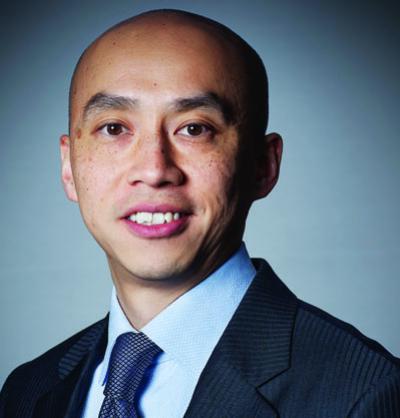 |
|
| Hughes |
While the exchange-traded fund (ETF) industry continues forging ahead, with global growth rates projected at 15%-16% over the next five years, its popularity in Asia lags behind. The value of assets in ETFs reached US$2.7 trillion in October 2014, according to a report by State Street Global Advisors, of which only 7.3% are ETFs listed in Asia.
October saw net inflows of US$27 billion into funds listed in the US, inflows of US$8.7 billion into Europe and outflows of US$1.5 billion from Asia-Pacific ETFs.
One reason behind the low numbers is the lack of awareness of ETFs as an attractive asset class among retail investors. In North America, which accounts for 74.8% of global AUM in ETFs, “you have a much more diverse breakdown between retail and institutional investors”, says Ray Chan, head of ETF business development at State Street Global Advisors. “In this region [Asia], it’s still predominantly institutional investors.”
While education is an obvious platform to broaden the awareness and raise the popularity of ETFs, according to Chan, many employees in Hong Kong will have their first exposure to them through the Mandatory Provident Fund (MPF), the territory’s pension scheme. A June 2014 consultation paper published by the Financial Services and Treasury Bureau proposes introducing a core fund that would use passive strategies to lower the cost. ETFs would be an ideal tool to implement such passive strategies and in turn they would gain acceptance and popularity as investment vehicles, comments Chan.
Although institutional investors in other parts of the world have been using ETFs in a variety of ways, for example to equitize cash in portfolios or to maintain exposure while managing transitions between portfolio managers, their Asian counterparts still use them mostly for strategic and tactical asset allocation. This is going to change, in time, as the new trends inevitably get adopted in Asia, contributing to the growth of ETFs in the region.
In the meantime though, the industry needs to pump liquidity into a broader range of products, adds Chan. Of the more than 120 ETFs listed on the Hong Kong stock exchange, only half a dozen are trading with significant daily volumes. Investors surveyed by Greenwich Associates in 2013 pointed to liquidity as the most important factor in their decision to invest in an ETF, surpassing management fees and tracking error as selection criteria.
This creates a chicken-and-egg problem. An ETF with low liquidity tends to be priced with unattractive bid/ask spreads that discourage investors and prevent the product from achieving sufficient trading volumes.
It is not easy to break this cycle, unless the ETF truly meets investors’ demand. Identifying this demand and offering products that would fulfil it is the main task of an ETF manager.
 |
|
| Chan |
From SPDR to TraHK
State Street launched its first ETF in the US in January 1993. SPDR S&P 500 ETF remains the world’s largest by trading volume, and by AUM among equity ETFs. In November 1999, the company introduced a similar product in Hong Kong, The Tracker Fund of Hong Kong, or TraHK. It is the most broadly-traded ETF linked to the city’s market.
TraHK is not, however, the most traded ETF on the Hong Kong bourse. That distinction goes to two ETFs based on the FTSE A50 China index whose daily trading volume is larger than that of TraHK. This illustrates the point that most ETF action on the territory’s ETF landscape is about access to China.
“Hong Kong as a platform to access the China market would continue to be a significant underlying growth engine driving the ETF market development,” says Chan. Fund managers launch China-focused ETFs in Hong Kong because of its large allotment of QFII quota that allows investing in Chinese shares. China ETFs are still in demand around the world, as investors in developed markets want to benefit from the country’s steady growth.
In the meantime, issuers continue coming to the Hong Kong market with new products. BMO Global Asset Management, a division of BMO, a Canadian bank, launched three new ETFs on the Hong Kong Stock Exchange in November 2014.
BMO Hong Kong Banks ETF is based on the Nasdaq Hong Kong Bank Index, created especially for this purpose in July 2014. The fund will provide exposure to the city’s banking sector. As of November 20, it had HK$87 million in assets.
The second fund, the BMO Asia USD Investment Grade Bond ETF, invests in high-quality corporate and sovereign debt, while the third, the BMO Asia High Dividend ETF, uses the Nasdaq Asia ex-Japan Dividend Achievers index to create an investment that would provide equity exposure and a regular income. Their target customers are retirees.
“Around the world, investing in retirement is about supplementing your pension income with growth and income opportunity,” says Robert J. Hughes, vice-president of Global Index Group at Nasdaq OMX. “We want to help educate people in terms of what role dividends can play in their portfolios.” While a typical retirement portfolio consists of physical assets, equities and perhaps ETFs based on equity indices, commodities or fixed income, in a long-term successful retirement package “you need to have dividends as part of that mix”, he points out.
China presents another potentially vast and as yet largely untapped market for ETFs. While the country’s capital controls prevent onshore investors from investing freely in foreign securities, the Qualified Domestic Institutional Investor (QDII) programme allows investment managers to create investment funds holding foreign securities, for distribution to investors in mainland China. Most of the existing QDII products are mutual funds, but ETFs are starting to make inroads. An example is Guotai Nasdaq 100 ETF listed on the Shanghai Stock Exchange launched in May 2013.
Nasdaq’s further expansion plans in Asia attempt to make the best use of the booming biotech sector index. Mirae Asset launched the Tiger Nasdaq Bio ETF earlier in 2014 in South Korea and efforts are under way to launch similar funds in other markets. Pointing out the ageing population in many Asian countries and the rapid progress of biomedical technology, Hughes cannot contain his excitement about the prospects he sees in this sector. “If you look at the performance of the Nasdaq biotech index over the last five years, it’s up about 300%,” he enthuses.
Actively-managed ETFs
With fund managers constantly exploring new opportunities and strategies, some have attempted to bring the active management approach to the world of traditionally passive, index-based ETFs.
The area is still small and has an experimental quality to it, but Chan sees significant potential. State Street Global Advisors launched the SPDR Blackstone/GSO Senior Loan ETF in April 2013 to provide access to the world of bank senior loans. “We leverage [GSO’s] expertise in that space to select the securities and we wrap them under an ETF structure.” While the underlying assets are very illiquid (a normal settlement period would be 20 or 21 days), the ETF structure allows investors to trade it with daily liquidity. The management fee for this ETF, while higher than for index-based passive funds, is 70bp.
Hong Kong ETF managers have high hopes riding on the launch of the Hong Kong-Shanghai Stock Connect initiative in November 2014, which will permit investors in Hong Kong to trade Shanghai stocks and vice-versa. Initially, ETFs are not part of the scheme, so it remains to be seen if Hong Kong-listed ETFs prove attractive for Chinese investors. As such, the southbound flow of capital has a potential to boost the demand for Hong Kong-listed ETFs and the prices of the underlying assets, Chan forecasts.
Despite the challenges of investor education, building the infrastructure and negotiating regulatory hurdles, he sees much potential for further growth of ETFs in China, Hong Kong and other countries in the region. Insurance companies in particular are likely to recognize the benefits of using ETFs to diversify their holdings, he says.
Another significant opportunity lies in the area of private wealth management and high net worth clients. “In private banks, especially the discretionary desk, we’ve been seeing an increased use of ETFs as a tool for asset allocation,” he says. Starting in Asia with the private banking hubs of Hong Kong and Singapore, this trend will follow the path of North America and Europe where investment advisors increasingly often use ETFs in their fee-based accounts.




.jpg)
.jpg)


